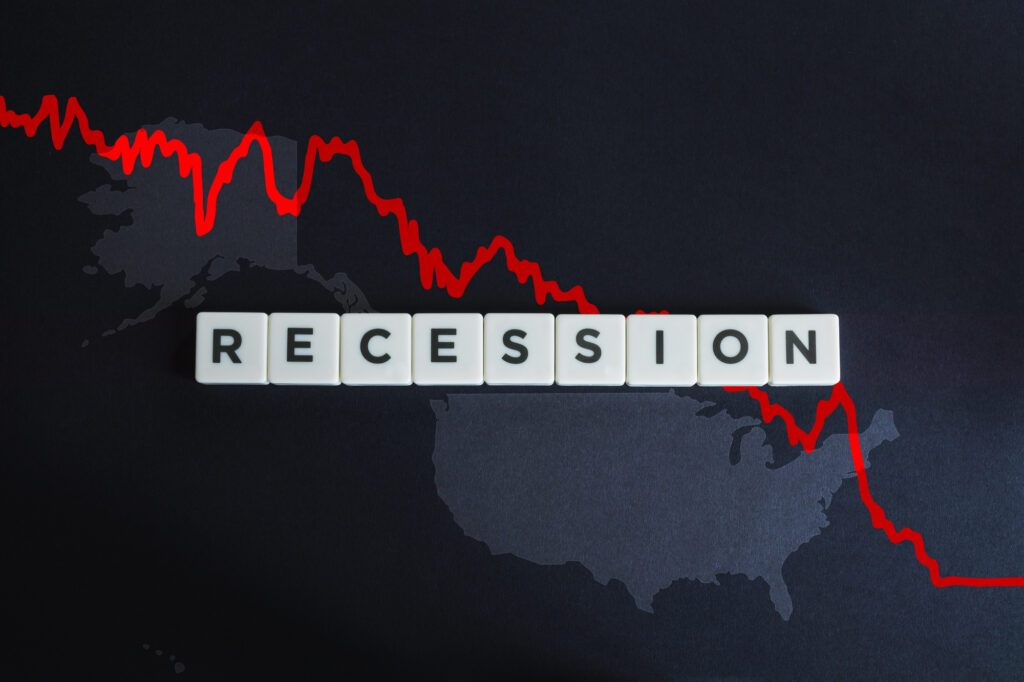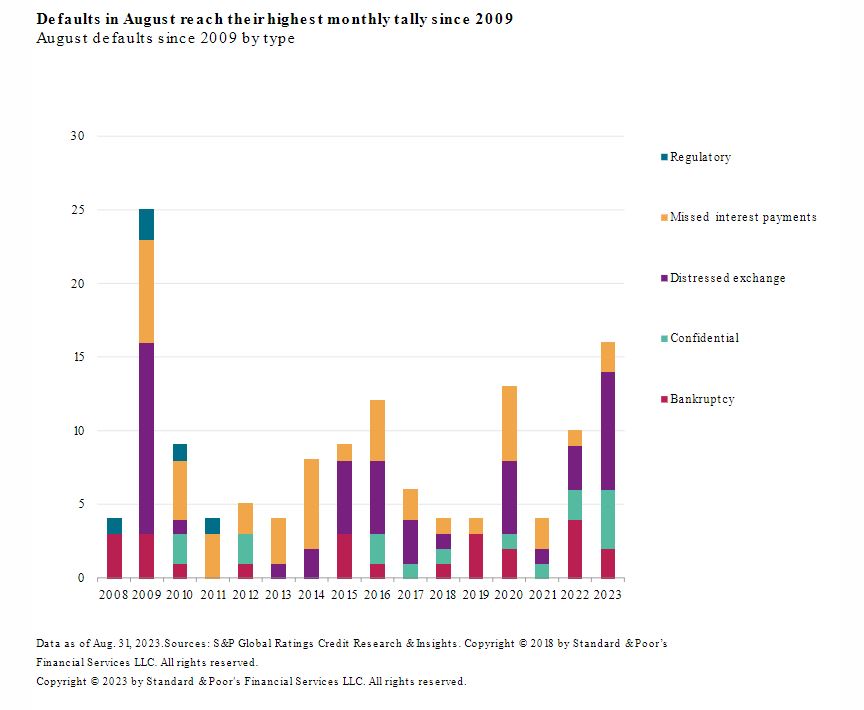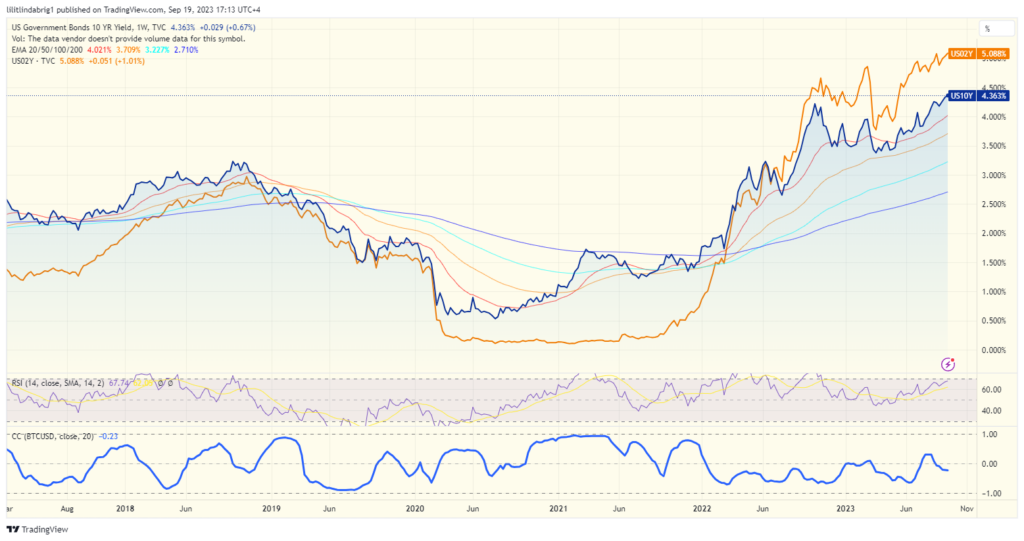Key Takeaways:
- Corporate debt default took down 69 companies in 2023.
- The debt could mount further with destructive consequences, experts say.
- Recession fears intensify as unemployment climbs to 3.8%.

YEREVAN (CoinChapter.com) — According to data from capital market company S&P Global, the number of companies that defaulted on corporate debt rose to 69 per the Aug 31 tally, a 176% increase from 25 in 2022.
Moreover, the report stated that with 16 defaults, this August’s tally was the highest August monthly tally since 2008-9’s Global Financial Crisis (GFC), reigniting recession fears.

Corporate debt default chain will continue – experts
Silicon Valley Bank, Bed Bath & Beyond, Lordstown Motors, and MediaMath Holdings are well-known names that went under this year.
Transportation service provider Yellow Corp., the multi-cloud service managing Rackspace Technology Global Inc., and financial services provider CNG Holdings Inc. also made the bankruptcy list.
Many American companies struggled to meet their debt obligations after the Federal Reserve boosted interest rates by more than 500 basis points over the past six quarters to tame inflation. Government bond yields, against which policymakers benchmark corporate debt rates, have surged in line with the Fed’shawkish policies.
At the same time, the US Treasury yield curve has been inverted since 2022, ringing recession bells. In detail, an inverted yield curve has successfully predicted every recession since 1955, with only one false signal. The benchmark 10-year yield climbed to 4.36% on Sep 19, as the 2-yield stood at 5%.

While some experts insist the recession risks are low, Goldman Sachs strategists warn of an incoming “giant wall of corporate debt.” The bank estimated that $790 billion of corporate debt was set to mature in 2024, followed by $1.07 trillion of debt maturing in 2025.
Recent economic growth doesn’t erase recession risks.
Thus, the mounting debt-related stress in the corporate sector could push more companies into bankruptcy. Stephanie Pomboy, the founder and president of the boutique research firm Macro Mavens, agreed. She noted that the current corporate debt default could carry greater risks than the GFC.
It’s really something, listening to johnny-come-latelys parroting my talking points on corporate bankruptcies (which none of them saw coming 6 mo’s ago). But they still fail to connect the dots. If they did, they’d be calling for a fiscal & monetary response that makes 2008-9 look like peanuts.
Pomboy tweeted.
Stephen Dover, the Chief Market Strategist at Franklin Templeton Institute, also voiced his concerns.
The expert noted that over the past 15 years, US household and corporate sector indebtedness has changed significantly and in ways that make the economy, profits, and equity valuations “less sensitive to monetary policy than at any time in over a generation.”
But is this happy situation sustainable? In the long run, no. At some point, new borrowings are required, and maturing debt must be rolled over. If borrowing costs remain elevated, the good times will go away.
he wrote in late August.
Weak Labor Market
Meanwhile, the profits’ newly-found “insensitivity” to Fed policies could also explain continued hiring throughout 2023.
However, the August Unemployment Report from the Bureau of Labor Statistics showed the unemployment rate rose to 3.8% year-over-year, a monthly increase of 0.3%. Moreover, the unemployment rate is the highest since February 2022.
Nick Bunker, head of economic research at the Indeed Hiring Lab, called the slow-down a welcome change.
The U.S. labor market continues to come back to earth but from a very high peak. The labor market was sprinting last year, and now it’s getting closer to a marathon pace. A slowdown is welcome; it’s the only way to go the distance.
he noted.
However, if Goldman Sachs experts are correct, the labor market will face challenges greater than a “slow pace.” The near-$2 trillion maturing debt could weaken the US economy further, triggering a recession worse than the GFC in 2008-9.


